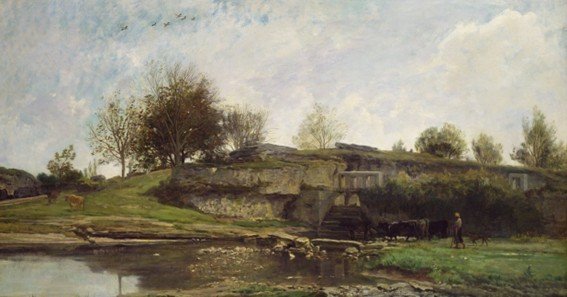If you’ve ever asked why did charles francois daubigny paint the lock at optevoz, you’re delving into a fascinating blend of art, nature, and history. Charles-François Daubigny, a prominent French landscape painter of the 19th century, was known for his ability to capture natural light, water, and the serene beauty of everyday scenes. The Lock at Optevoz stands as a testament to his deep connection with nature and his curiosity about the interplay between human engineering and the natural environment.
Uncovering the Inspiration Behind the Painting
1. A Passion for Natural Landscapes
Daubigny was greatly influenced by the Barbizon school—a group of artists dedicated to portraying nature with honesty and subtlety. The lock at Optevoz, likely situated along a river or canal, provided an ideal subject to explore the dynamic relationship between water, light, and the surrounding landscape. By painting this scene, Daubigny celebrated the beauty of nature in its simplest form.
2. The Intersection of Nature and Human Innovation
Locks, as man-made structures designed to manage water flow and navigation, offered Daubigny a unique perspective. He was intrigued by how these engineering marvels blended with natural settings. The Lock at Optevoz symbolizes the merging of human ingenuity with the timeless rhythm of nature—a recurring theme in his work.
3. Capturing Transient Moments
Known for his keen observation of light and atmosphere, Daubigny often painted scenes that conveyed the fleeting moments of nature. The interplay of water, sky, and reflections in the lock provided a perfect canvas for showcasing changes in light, weather, and time of day. This transient quality is a hallmark of his work and a precursor to the Impressionist movement.
4. A Personal Connection to the Locale
While detailed records of Daubigny’s visit to Optevoz may be sparse, many of his paintings reflect personal journeys and explorations of the French countryside. The serene setting of the lock may have resonated with him, prompting a deeper emotional connection and inspiring him to immortalize the scene on canvas.
5. Artistic Innovation and Experimentation
During his career, Daubigny continuously experimented with composition and technique. The Lock at Optevoz allowed him to push the boundaries of traditional landscape painting, incorporating elements of movement and reflection. This innovation not only enhanced his reputation as a master of landscape art but also paved the way for future generations of Impressionists.
Frequently Asked Questions (FAQ)
-
Q: Who was Charles-François Daubigny?
A: Charles-François Daubigny was a prominent 19th-century French landscape painter known for his realistic portrayals of nature and his influence on the Barbizon school and early Impressionism. -
Q: What significance does the Lock at Optevoz hold in Daubigny’s work?
A: The Lock at Optevoz represents the harmonious blend of human engineering and natural landscapes, reflecting Daubigny’s fascination with light, water, and the transient beauty of nature. -
Q: How did the Barbizon school influence Daubigny’s style?
A: The Barbizon school emphasized naturalism and realistic portrayals of the countryside. Daubigny, as part of this movement, focused on capturing natural light, atmospheric effects, and the essence of everyday landscapes. -
Q: Is there historical significance to the location of Optevoz?
A: While specific historical records of Optevoz in relation to Daubigny may be limited, such locations were typically chosen for their picturesque qualities and the unique interplay between natural scenery and human-made structures like locks. -
Q: What impact did Daubigny have on later art movements?
A: Daubigny’s innovative techniques and emphasis on natural light and atmosphere significantly influenced the Impressionist movement, inspiring artists to explore and capture the fleeting moments of nature with a fresh perspective.
By exploring why did charles francois daubigny paint the lock at optevoz, we gain insight into his artistic vision and the factors that drove him to capture such a unique scene. His work not only reflects the beauty of nature and human innovation but also highlights his lasting impact on the evolution of landscape painting.










